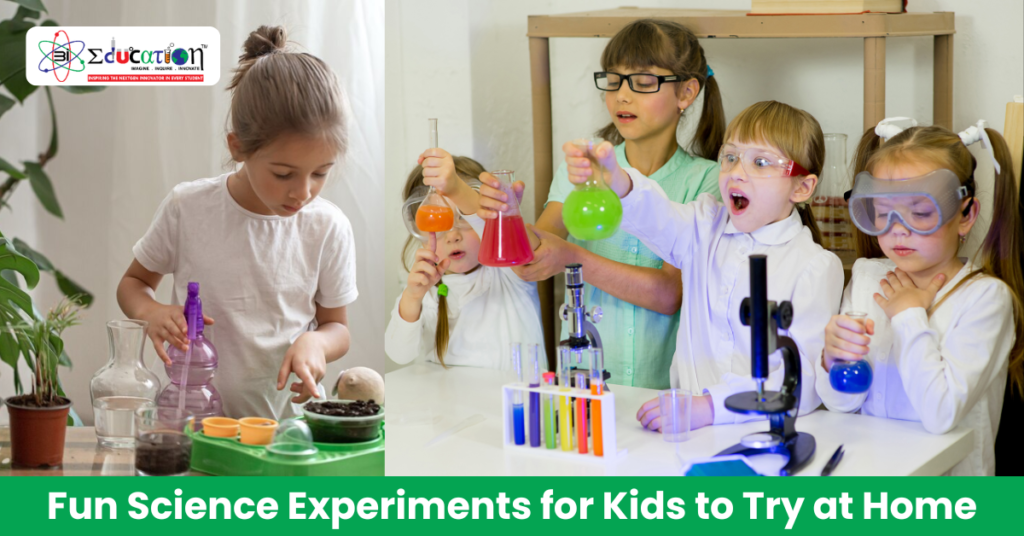Fun Science Experiments for Kids to Try at Home
Engaging children in science experiments at home is a fantastic way to ignite their curiosity and foster a love for learning. These hands-on activities not only make complex concepts more accessible but also provide a fun bonding experience for families. Here are some simple, safe, and exciting experiments suitable for kids from grades 1 to 10. 1. Create a Homemade Lava Lamp Concept: Density and chemical reactions Materials: Instructions: Science Behind It: The oil and water don’t mix due to differences in density. The Alka-Seltzer reacts with water, producing carbon dioxide gas, which carries colored water droplets through the oil. Source : 3kindrednurseries.co.uk Source : Mommy Poppins 2. Make Elephant Toothpaste Concept: Chemical reactions and catalysts Materials: Instructions: Science Behind It: The yeast acts as a catalyst, breaking down hydrogen peroxide into water and oxygen. The rapid release of oxygen creates foam that erupts from the bottle. Source : The SunSource : Mommy PoppinsSource : kindrednurseries.co.uk 3. Grow Your Own Crystals Concept: Saturation and crystallization Materials: Instructions: Science Behind It: As the solution cools, it becomes supersaturated, and borax particles form crystals on the pipe cleaner. Souce : ParentsSource : Reddit 4. Invisible Ink with Lemon Juice Concept: Acid oxidation Materials: Instructions: Science Behind It: Lemon juice weakens the paper fibers. When heated, these areas brown faster, revealing the message. 5. Dancing Raisins Concept: Buoyancy and gas formation Materials: Instructions: Science Behind It: Carbon dioxide bubbles attach to the raisins, making them buoyant and causing them to rise. When the bubbles pop, the raisins sink. Source : kindrednurseries.co.ukSouce : kindrednurseries.co.uk 6. Magic Milk Experiment Concept: Surface tension and chemical reactions Materials: Instructions: Science Behind It: Dish soap disrupts the milk’s surface tension, causing the colors to move and create patterns. Source : kindrednurseries.co.uk 7. Homemade Slime Concept: Polymer formation Materials: Instructions: Science Behind It: The combination creates a polymer, giving slime its stretchy texture. Souce : Parents 8. Rainbow in a Glass Concept: Density and layering Materials: Instructions: Science Behind It: Each liquid has a different density, meaning heavier liquids stay at the bottom while lighter ones float on top. This creates a beautiful rainbow effect. Why Science Experiments at Home Matter At 3iEducation, we believe learning should be fun and interactive. Science experiments at home allow kids to explore concepts in an exciting way without feeling like they’re studying. These activities help develop problem-solving skills, encourage creativity, and make scientific principles easier to understand. By performing hands-on experiments, kids become more engaged and curious about the world around them. Plus, parents can bond with their children while reinforcing important STEM (Science, Technology, Engineering, and Mathematics) skills. Tips for Parents When Doing Science Experiments Join 3iEducation for More Fun Learning If you and your child enjoy hands-on learning, 3iEducation offers engaging educational resources tailored for students from grade 1 to 10. Our programs focus on making complex subjects fun and accessible, helping kids build a strong foundation in science and other key subjects. Want to explore more educational activities? Visit 3iEducation today and start your child’s journey toward a love for learning!





